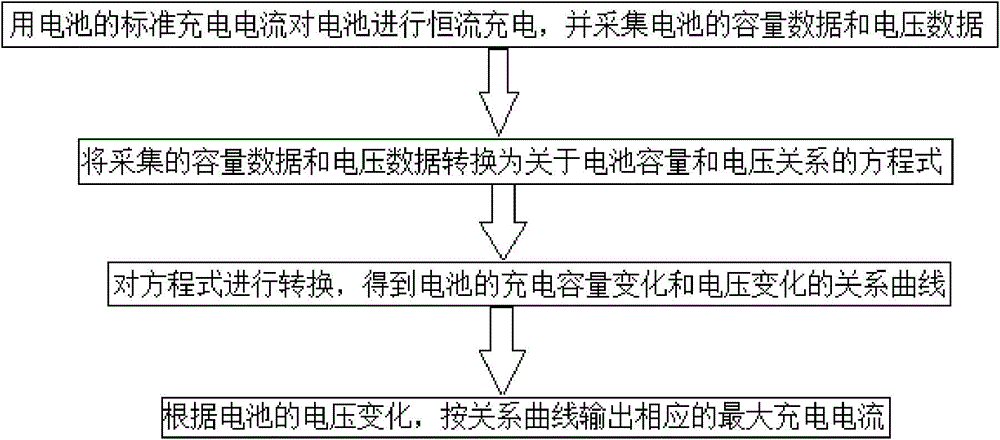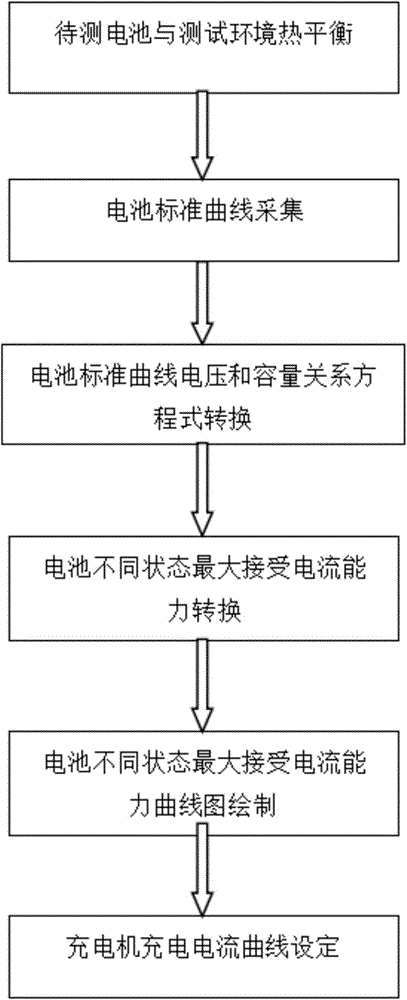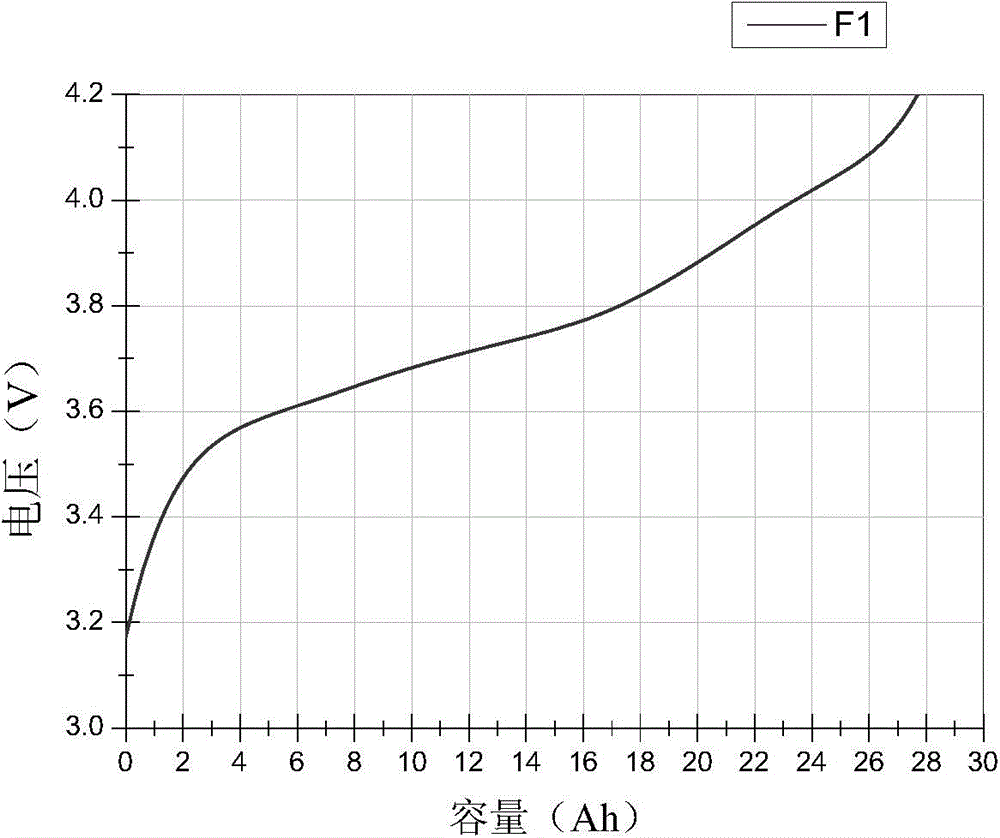Battery self-adaptive quick charging method
A fast charging and self-adaptive technology, applied in secondary battery charging/discharging, battery circuit devices, secondary battery repair/maintenance, etc., can solve the problems of shortened life, shortened fast charging time, no obvious changes, etc., to achieve increased Effects of service life, improvement of economy and safety, and reduction of charging time
- Summary
- Abstract
- Description
- Claims
- Application Information
AI Technical Summary
Problems solved by technology
Method used
Image
Examples
Embodiment 1
[0043] The battery adaptive fast charging method in this embodiment includes the following steps:
[0044] Step 1: Place the battery to be charged in an incubator at a constant temperature for more than 5 hours, and set the temperature of the incubator at 25±3°C.
[0045] Step 2: Discharge the battery to be charged at a constant current according to the standard current to the cut-off voltage specified by the manufacturer.
[0046] Step 3: Place the battery to be charged in an incubator at a constant temperature for more than 5 hours, and set the temperature of the incubator to 25±3°C.
[0047] Step 4: Charge the battery according to the standard current and constant current to the cut-off voltage specified by the manufacturer, and collect the battery voltage and charging capacity change data at the same time. The ambient temperature for constant current charging is 20-30°C, and the standard charging current is 1 / 3C.
[0048] Step 5: Make a graph of the collected voltage data...
Embodiment 2
[0053] In order to further illustrate the present invention, in this embodiment, according to the charging setting process of the existing lithium-ion battery, a 26Ah ternary material vehicle lithium-ion battery is taken as an example, which includes the following steps:
[0054] Step 1: Place the battery in a thermostat for 5 hours, and set the temperature of the thermostat to 25±3°C.
[0055] Step 2: Discharge the battery at a constant current to a cut-off voltage of 3.0V, and the discharge current is 8.7A.
[0056]Step 3: Let the battery stand still in the incubator for 5 hours, and set the temperature of the incubator at 25±3°C.
[0057] Step 4: Charge the battery according to the standard current and constant current to the cut-off voltage 4.15V specified by the manufacturer, and collect the battery voltage and charging capacity change data at the same time. The charging current is 8.7A, the charging cut-off voltage is 4.15V, and the constant current charging environment ...
PUM
 Login to View More
Login to View More Abstract
Description
Claims
Application Information
 Login to View More
Login to View More - R&D
- Intellectual Property
- Life Sciences
- Materials
- Tech Scout
- Unparalleled Data Quality
- Higher Quality Content
- 60% Fewer Hallucinations
Browse by: Latest US Patents, China's latest patents, Technical Efficacy Thesaurus, Application Domain, Technology Topic, Popular Technical Reports.
© 2025 PatSnap. All rights reserved.Legal|Privacy policy|Modern Slavery Act Transparency Statement|Sitemap|About US| Contact US: help@patsnap.com



